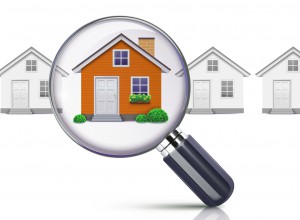The Sydney rental market has recorded the highest vacancy rate in at least 13 years according to SQM Research.
Sydney’s rental vacancy rate rose to 2.8% in June with an estimated 19,572 residential rental dwellings sitting vacant and available for rent.
The vacancy rate rose from 2.5% recorded in May and 2.0% recorded in June 2017. 
2.8% is the highest rental vacancy rate since at least 2005 when SQM Research commenced record keeping of rental listings.
Nationally, the residential rental vacancy rate rose to 2.3% in June (from 2.1% recorded in May) with the number of vacancies Australia-wide now sitting at 75,757 properties.
Most cities recorded a rise with Melbourne rising to 1.6%, Brisbane to 3.0%, Canberra to 0.9% and Adelaide rising to 1.5%. Rental vacancies remained steady in Perth (4.1%), Darwin (3.5%) and Hobart (0.7%)
It should be noted that there tends to be a seasonal rise in rental vacancies for the major capital cities during the month of June.
However it is SQM’s view that the rise recorded in Sydney goes beyond seasonal factors.

Key Points
- Nationally, the vacancy rate was marginally up at 2.3% in June 2018, with the number of vacancies Australia-wide now sitting at 75,757 properties.
- Hobart continues to record the lowest vacancy rate, unchanged from May at 0.7%, followed closely by Canberra at 0.9%
- Perth recorded the highest vacancy rate of the capital cities, unchanged from May at 4.1% in June, but down from 5.4% a year ago.
- Melbourne’s vacancy rate continues to inch up to 1.6% from 1.4%.
- Sydney’s vacancy rate also rose to 2.8% from 2.5% and up from 2.0% a year earlier.
- Capital city asking rents for houses continue to fall over the month to 12 July 2018 by 0.4% to $549 per week, whilst units remain steady at $444 per week.
Asking Rents
Capital city asking rents for houses fell over the month to 12 July 2018 by 0.4% to $549 a week. Unit asking rents remain steady at $444 a week.
Over the year, asking house rents rose just 0.5%, while unit asking rents rose modestly by 0.9%.
While the asking rent for a three-bedroom house in Sydney remains the highest in the nation at $709 a week, rents fell 0.8% over the month to 12 July, with the upward trend in the vacancy rate easing pricing pressures. Asking unit rents in Sydney now stand at $522 a week, down by 0.2% over the month. 
Sydney was the only city to record falls in rents for the year with rents for houses down by 2.2% and units down by 0.1%
Canberra also recorded monthly falls in rents for both houses (0.1%) and units (2.5%) however rents are well up by 13% over the past 12 months for houses.
Melbourne’s house rents fell by 1.3% for the month but unit rents rose marginally by 0.1%.
Brisbane, Darwin, Adelaide and Perth house rents continue to register small increases in the past 30 days.
However, rents for units in Adelaide fell by 0.2%, making it the cheapest capital city to rent a unit at $299.60 a week.
Adelaide is also the cheapest capital city to rent a house, with the asking rent sitting at $383.10 a week, although there is an increase of 0.9% for June.

Source: www.sqmresearch.com.au
Rental vacancies are rising and rents are easing in Sydney due to a surge in building completions and potentially a mild slowdown in the population growth rate. 
There is now a greater supply of rental accommodation at a time when the growth in rental demand is probably falling a little.
Sydney rents are now down for the year and it is likely rents will continue to slip as there is still a lot of supply coming in the pipeline.
Sydney will shortly record a fall in its population growth rate due to a relatively recent steep rise in interstate migration towards Queensland.
This is the only time in my career that I can say with certainty that Sydney is now a buyer’s and a renter’s market, simultaneously.

No comments:
Post a Comment